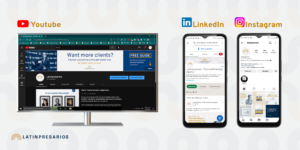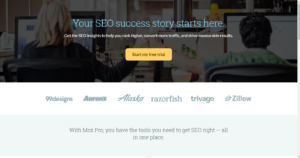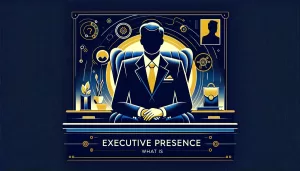Applying the personal brand tips I’ll share in this article can help you go from the “best-kept” secret in your niche to becoming the go-to expert.
Nowadays, in an era where the gatekeepers are losing their power, creating a platform that allows you to maximize your professional accomplishments is key. A strong personal brand is such a platform.
You no longer need to be featured in recognized publications such as Forbes, Fortune, or Entrepreneur.
You can publish your own content and get more attention than them (I know because I’ve been able to outrank these publications for several topics).
This article will give you the ultimate personal brand tips, examples, and necessary explanations to start branding yourself.
Contents
What is personal branding?
Personal branding is, in essence, the actions you take to expand your professional reputation.
Is the “mental image” that others picture in their heads when thinking of you.
Your personal brand can include some of these elements:
- Your brand image (the way you look)
- Your brand voice (how you speak or communicate)
- Your actions (what you do or dedicate to)
- Your thought leadership (the content you create)
What makes a strong personal brand?
A strong personal brand is one that has a strong personal branding foundation and a clear strategy.
More importantly, to have a successful personal brand, there are a few must-haves you need to be aware of:
- Understanding your passion, professional potential, and profit-generating activities
- Having a clear picture of the competitive landscape in your industry or niche
- Defining the topics you want to be known for
If you have applied and developed these three golden rules of personal branding, you’re on the right path.
Below is the list of our top 7 personal brand tips.
1: Make your brand memorable
A great way to stand out for your audience or potential new clients to recognize you is to create your brand’s “look and feel,” aka, brand identity.
Just as we can tell that a church is in the Baroque style or that a painting is by Picasso just by looking at it, people should look at your brand and content and recognize it right away.
By establishing those features that will make your brand unique—color palette, fonts, logo, and brand voice—you’ll be one step further toward establishing yourself as the go-to thought leader in your niche.
A great brand identity example is one that we all know about Mcdonald’s.

The brightness of the red and yellow colors, the youthful, playful, and warm vibes that it transmits, the iconic golden archers, and the amazing family memories made by having a simple but delicious meal.
Another personal brand identity example is Gary Vaynerchuk.

We can easily recognize him by the bluntness and tone of his speech, his body language, the way he transmits his knowledge, and the signature of his content (fast-paced and condensed).
2: Upgrade your professional profile
Once you have the look and feel of your brand, it’s the perfect time to upgrade your profile according to the features that are related to your personal brand.
You can start by building your personal brand statement and conducting a photo shoot that makes you look professional and that it’s aligned with that statement.
You should take into consideration the platforms on which you’ll be displaying your brand statement and photos.
In a Youtube heading, for example, you’ll have plenty of space to make a bigger design. So you could play with other elements that can be present on the shoot.
If you’re interested in knowing more about how to build your personal brand on Youtube, here are some tips that can help you out: Using YouTube for Your Personal Brand: The Ultimate Guide
When upgrading your profile, make sure to be consistent throughout the social networks you decide to use.
This will give your brand more credibility and allow people to recognize you easily.

3: Document and share your experiences
To become the go-to thought leader in your niche, you must share your experiences with your audience.
By sharing your knowledge and insights, you’ll be able to demonstrate your worth and expertise on the topics you want to dominate as an expert.
You can document and share information that is relevant to your personal brand and that it has great value for your audience.
The content you create could go from a personal story of who you are and how you got where you are now, to a simple but well-founded comment about what’s happening in your industry.
You decide what to share and how to share it so it can always be authentic, relatable, and engaging.
An example of this personal brand tip is the entrepreneur, Grant Cardone.

He’s sharp and straightforward when sharing valuable content with his audience. He also documents and shares his family’s involvement with his own business ideas and strategies.
4: Create a content calendar
“You can do more in one to two years posting consistently than you will in five years posting occasionally.”
One of the many pillars of a successful personal brand, and one of the hardest to maintain, is consistency.
Planning will keep you away from slacking, and it’ll also help you to manage your time better.
You could schedule a whole month ahead in just one day, and then, use your free time to invest it in developing new skills.
Being organized will make the content creation process easier and become one of the most effective tactics that’ll keep growing your personal brand over time.
If you’re ready to start planning, we have designed a content calendar template that we hope will help you be consistent.
5: Sharpen your skills and learn new ones
This goes beyond any of these personal brand tips. This is about having a growth mindset.
By cultivating our knowledge and getting out of our comfort zone, you’ll build the necessary confidence to share your thoughts and ideas with others.
If you wish to become a figure of authority in your niche, there are three essential skills that you should dedicate time to.
These are: listening, writing, and speaking.
By perfecting your writing, learning how to speak to a camera properly, and getting better at being patient as a good listener, you’ll slowly gain recognition and, later on, authority in your industry.
A good leader continually grows and evolves to become the best version of himself and help others do the same.
As an example of this, we have a personal reference: Marina Mogilko.

She’s a successful and well-known Youtuber who runs three channels in two different languages:
- Linguamarina (a channel about English)
- Silicon Valley Girl (a channel about living in Silicon Valley)
- A channel in Russian
She has developed the ability to have a personal brand with different interests and goals by learning, exploring, and perfecting the skills we have just mentioned.
6: Conduct informational interviews
“Don’t be afraid to ask anyone you’re interested in learning more from. You’d be surprised by how genuine and generous people are.” – Dr. Sean Gresh
There’s no better way to grow than to learn from those we admire.
These days there are many tools that can help you reach out and connect with those leaders in your industry.
But before you do that, here’s a piece of advice: make sure to show interest in the content these leaders are giving away and engage with it.
If you’re constant and manage to add extra value to the content that they’re creating, you’ll be offering something before asking for anything.
Having informal interviews is also a great strategy to build your network and position your personal brand on the radar of the thought leaders in your niche.
7: Ask for feedback & recommendations
Even if you’re trying to build your personal brand or improve it, asking for feedback is always a good option.
Even though no one will know your personal brand as well as you do, getting feedback from a fresh point of view will help you see things you weren’t aware of.
Through this practice, you could also make sure your brand reflects who you are, how you want to be seen, and if your message is coming across as you intended.
An example of this could be the author and inspirational speaker, Simon Sinek

He’s always preaching about what leadership is really about, how it’s a skill that requires a lot of vulnerability and openness towards others to work.
Getting recommendations or case studies, it’s also a “must” if you want to become the next go-to thought leader in your industry.
They’re proof of the qualities that you may have and of the hard work and achievements you’ve conquered.
An example of a brand that uses case studies to show its credibility and success could be: Moz, the SEO software

How to apply these personal brand tips?
The personal brand tips we shared in this article are only the beginning of a long and rewarding journey.
And once you’ve applied and mastered these tactics to improve your brand, you’ll certainly start to gather all the fruits you’ve harvested with hard work and consistency.
As your personal brand grows, you’re going to have to implement some changes and start building new strategies. But don’t worry, that’s the way it’s supposed to be.
Remember that your personal brand represents who you are. As is expected, over the years, you’ll keep evolving and becoming a better version of yourself, as will your personal brand.
That’s why it is crucial to identify when your personal brand needs the help of professionals to maintain its growth and get some refinements.
Here are some clues to know if you require help:
- If you don’t have the time to create, share and update content with your audience anymore
- If you feel the need to re-do your discovery process and re-establish some core pillars of your brand
- If you can’t keep up or don’t know how to implement new strategies to continue your personal brand growth
As the personal brand agency that we are, we fully understand the hardships of taking your personal brand to the next level.
If you’re ready to level up your personal brand and want to know more about how to achieve this goal, we invite you to book a call with us so you can learn all you need to know about becoming the next go-to thought leader in your niche.






